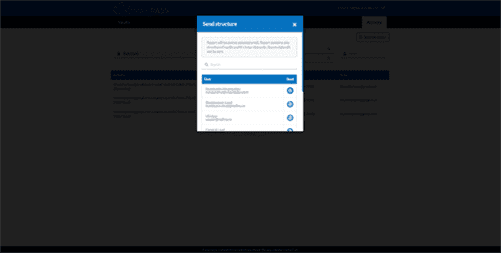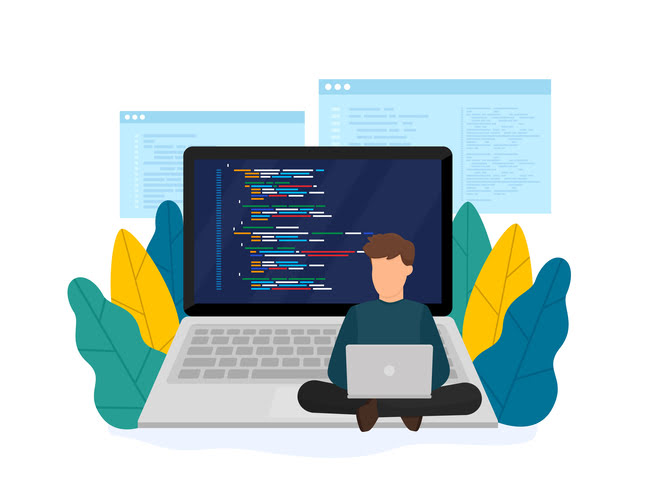In a cloud computing model, compute resources and services are often centralized at large datacenters. Clouds often provide a portion of the network infrastructure required to connect IoT devices to the internet. With regards to infrastructure, edge computing is a network of local micro data centers for storage and processing purposes. At the same time, the central data center oversees the proceedings and gets valuable insights into the local data processing.
Extending IT to the mission’s edge, where edge computing, bolstered by IoT and 5G connectivity, is transforming federal government. The company uses sensors with enough compute capacity to process data using predetermined filtering rules before transmission. Edge computing works by bringing computation and storage closer to the producers and consumers of data.
Examples and Use Cases of Edge Computing
Consequently, onboard computing power and edge data centers are needed for mission-critical processing for navigation, vehicle-to-vehicle communications and integration with emerging smart cities. It offers some unique advantages over traditional models, where computing power is centralized at an on-premise data center. Putting compute at the edge allows companies to improve how they manage and use physical assets and create new interactive, human experiences.
We’ve understood that moving data and processing closer to the point of generation is a better approach for many use cases, and now we have the technology and bandwidth to pull it off. Despite the rise of some common standards, edge computing largely lacks interoperability with systems in enterprise data centers. With each edge computing vendor supporting their own “standard,” it gets expensive to keep the various skills around to support edge-based systems. IoT is a network of connected devices embedded with sensors, software and connectivity capabilities that enable them to collect and exchange data. The capabilities of the IoT that drive business efficiencies are at the root of the enormous growth of the Internet of things. In fact, Statista forecasts that revenue in the IoT market will reach $621.6B by 2030 — a figure that will have tripled from 2020.
An introduction to edge computing and use case examples
It enables businesses to analyze critical data in real-time without sending it thousands of miles away. Moreover, it is a crucial step forward for companies looking to create high-performance applications with low latency. Applications on the “edge” of a network, closer to the devices and end users producing key data. It is a decentralized form of computing that empowers these solutions to get closer to the action than ever before.

Now, edge is helping create new insights and experiences, enabled by the larger cloud backbone. AWS for the Edge brings the world’s most capable and secure cloud closer to your endpoints and users. AWS is the only provider that extends infrastructure, services, APIs, and tools offered in the cloud as a fully managed service to virtually any on-premises data center, co-location space, or edge facility. Examples include live video streaming in media and entertainment, online gaming, or virtual reality video feeds.
Edge architecture and key principles
Edge computing is a distributed computing paradigm that brings computation and data storage closer to where the data comes from. It’s about processing data closer to where it’s being generated so that you can process more data faster, leading to greater action-led results in real time. In an industrial setting, the edge device can be an autonomous mobile robot, a robot arm in an automotive factory. In health care, it can be a high-end surgical system that provides doctors with the ability to perform surgery from remote locations. Edge gateways themselves are considered edge devices within an edge-computing infrastructure.

Cloud-native approaches are often employed in a distributed computing environment to tackle issues originating from inconsistent development platforms and security frameworks. For this, it’s best to classify and containerize workloads around a set of microservices. Use APIs to support interoperability and offer new services that were previously not supported.
What are IoT and edge computing?
An effective way to understand the concept of edge computing is through the help of this relatable example and explanation by Michael Clegg, vice president and general manager of IoT and embedded at Supermicro. He says, “By processing incoming data at the edge, less information needs to be sent to the cloud and back. A good analogy would be a popular pizza restaurant that opens smaller branches in more neighborhoods since a pie baked at the main location would get cold on its way to a distant customer”. Rugged edge computers are often used to power interactive kiosk machines such as the ones you often pass by or use while you’re at the airport or supermarket. Hardened edge computers keep kiosk machines only 24/7 regardless of challenging environmental conditions. Rugged edge computers deliver the performance necessary to power kiosk machines while maintaining power efficiency.

Together, these three parties are not only responsible for implementation but are also required to work in collaboration to support edge computing resources in developing long-term strategy, vision, budget plans, and the overall course of action. Onboard skilled employees from within and outside the organization to form the right team with clearly defined objectives and outcomes. These teams can become the building blocks for your edge project, right from setting up operations to maintaining efficiency and running everything smoothly. Taking autonomous vehicles to the edge involves receiving information about speed, traffic conditions, traffic signals, pedestrians, vehicle speculations, road conditions, and other vehicles in real-time while the vehicle is in motion. Edge computing is driving the innovation of autonomous vehicles as it promises zero latency. Delays in information in this regard could be all the difference between endangering a life and saving one.
Overcoming Zero Trust Challenges with Edge Computing
Edge computing can power all the elements of a smart city, including autonomous cars, smart street lighting, smart factories, smart power grids, and public transport to be monitored for greater efficiency. Edge computing is a distributed computing framework that enables data to be processed closer to where it is created. Leverage an edge computing solution that nurtures the ability to innovate and can handle the diversity of equipment and devices in today’s marketplace. Edge computing is a priority for many telco service providers as they modernize their networks and seek new sources of revenue. Red Hat® Ansible® Automation Platform’s self-contained edge automation capabilities can be deployed across environments.
- Furthermore, differing device requirements for processing power, electricity and network connectivity can have an impact on the reliability of an edge device.
- The core issues with edge computing are the lack of standards and vast heterogeneity leading to complexity.
- David S. Linthicum is an internationally recognized industry expert and thought leader.
- Moreover, with the traditional model it is difficult to perform maintenance before a component or machine fails.
- Companies like Netflix, Spotify and other SaaS companies have even built their entire business models on the concept of cloud computing.
- Industrial IoT, or IIoT, refers to the use of IoT in an industrial context, such as the machines in a factory.
Rugged edge computers are often used by organizations because they can gather information from various sensors, cameras, and other devices, and they can use that information to determine when components or certain machinery fails. Find a vendor with a proven multicloud platform and a comprehensive portfolio of services designed to increase scalability, accelerate performance and strengthen security in your edge deployments. Ask your vendor about extended services that maximize intelligence and performance at the edge. The explosive growth and increasing computing power of IoT devices has resulted in unprecedented volumes of data. And data volumes will continue to grow as 5G networks increase the number of connected mobile devices.
Some edge computing examples
This remains a proven and time-tested approach to client-server computing for most typical business applications. Lastly, it is crucial to look at service-level agreements (SLA) and compliance upfront. In today’s fast-moving business world, a slowdown or downtime can dent your business substantially.
A single edge deployment simply isn’t enough to handle such a load, so fog computing can operate a series of fog node deployments within the scope of the environment to collect, process and analyze data. Edge computing in manufacturing units facilitates continuous monitoring by enabling real-time analytics and machine learning. This helps gain insights into product quality best cybersecurity stocks with the help of additional sensors employed in factories. The end goals include faster decision-making about the factory facility and manufacturing operations, capitalizing on unused data, and eliminating safety hazards on the factory floor. Together, they can work to provide productive solutions based on data collection and the goals and usage of different organizations.
Find our Cloud Architect Online Bootcamp in top cities:
Just as the number of internet-connected devices continues to climb, so does the number of use cases where edge computing can either save a company money or take advantage of extremely low latency. While edge computing can be deployed on networks other than 5G (such as 4G LTE), the converse is not necessarily true. In other words, companies cannot really benefit from 5G unless they have an edge computing infrastructure. According to the Gartner Hype Cycle 2017, edge computing is drawing closer to the Peak of Inflated Expectations and will likely reach the Plateau of Productivity in 2-5 years. Considering the ongoing research and developments in AI and 5G connectivity technologies, and the rising demands of smart industrial IoT applications, Edge Computing may reach maturity faster than expected. Particularly for use cases that involve AI voice assistance capabilities, the technology needs go beyond computational power and data transmission speed.
